At first glance, Este is a small, humble town in the North of Italy. Yet, this is a place that for three millennia has played centre stage to the rise and fall of some of the world’s greatest civilisations – from the Paleoveneti of the Iron Age and the Ancient Romans to medieval dynasties and the Republic of Venice.
Less than 40 mins away by car from Padua and just under an hour away from Venice, a visit to the walled town of Este is an excellent day trip especially if you are interested in archaeology, history, and nature.
Pretty as a picture, Este lies at the foot of the volcanic Euganean Hills, the beauty of which has inspired writers and poets of the calibre of Petrarch and Percy Shelley. Driving through Este, the first thing that will jump out at you will be the town’s medieval defensive wall followed by a gaggle of Gothic and Baroque buildings.
Stop in town and spend a relaxing half or full day there and, surrounded by blooming flowers and colourful houses, soon you will find yourself intrigued by stories spanning over three millennia.
So, in this blog post, I want to introduce you to Este and the top nine things to do in and around this lovely walled town in the Northern Italian region of the Veneto. If you are looking for a picturesque yet historical place to escape the crowds besieging the nearby large tourist magnets of Padua and Venice, Este is just the right destination.
With its iron-wrought balconies draped with plants and flowers as well as its many cafes, piazzas, villas, churches and craft workshops, Este has all the authentic charm of small-town Italy.
To make your planning easier, at the end of this page, I have also included lots of practical information about reaching and exploring Este in the Veneto, Northern Italy. From an abridged story of this charming town to suggestions for other places of interest to see in the area, I hope that my first-hand tried and tested tips will come in useful.
I discovered Este for myself by pure chance during our first six months of living here in the Veneto. We were on our way to another medieval walled town called Monselice when the road took us right through Este. I watched the mighty defensive wall adorned with crenelated turrets fly past the car’s windows and made a promise that we would visit Este as soon as possible.
A promise I have kept time and time again as we keep returning to this beautiful and intriguing town any chance we have. An exciting museum visit, a lovely walk in the park, an art-spotting exploration through the local churches, a relaxing drink sitting in a cafe on the sun-soaked high street…
Este has it all and then some more.
Let me share it all with you now!
Este, Italy – Top 9 Things to Do in This 3,000-Year-Old Walled Town
1. National Atestino Museum & Archaeological Excavations
It is a special pleasure to find yourself in a museum where you want to read every single board with information and see as close as possible every single exhibit. It’s one of those moments when time stands still and in a matter of minutes, you absorb so much new information that you feel enriched and inspired.
This is exactly how I felt during my first visit to the National Atestino Museum in Este. Considered one of Italy’s best archaeological museums, here you can trace the history of Este and the surrounding area over the last 30 centuries.
From artifacts belonging to the Paleovenetic Este Culture and to the Ancient Romans to exhibits covering the development of the local ceramic and metalworking crafts from prehistoric to our modern times, the museum has a rich collection which is organised in 11 rooms.
The Benvenuti Situla is the gem in the museum’s crown. This is a bronze bucket-shaped object dating back to around 600 B.C. Situlae – originally a feature of Etruscan art – were used as burial urns, among other things. The Benvenuti Situla is richly decorated with scenes of aristocratic life and military victories. As such, it’s a testament to the advanced knowledge of metalwork which was widely practiced in the area of Este at the time.
The National Atestino Museum has many other precious artifacts. Among them are tombs from the end of the Bronze Age/beginning of the Iron Age, protohistoric jewellery, items of daily life and sacral objects, inscriptions in the Venetic language, Roman ceramics and many other objects which paint a picture of life and death hundreds of years ago.
Special attention deserves the tomb of the princess Nerka Trostinia (also known as Nerka Trostiaia). Nerka was a noble lady who lived in Este in the 3rd century B.C. Her tomb contains rich Celtic jewels and Etruscan vases testifying to her refined taste and financial abilities.
The National Atestino Museum is housed in Palazzo Mocenigo – a palace built right in the heart of Este in the second half of the 16th century. It’s nestled in the surviving defensive wall of the medieval castle that once stood there. The inside walls and the ceilings of the palace are decorated with frescoes. Some are fully preserved whereas others are quite fragmented. The frescoes provide an interesting contrast to the ancient artifacts displayed in the museum.
Click here to access the National Atestino Museum’s website. It’s in Italian but you can use Google Translate to read the information published on it.
As a state-owned museum, the National Atestino Museum in Este is free to visit every first Sunday of the month.
If archaeology is your passion, after a visit to the museum, make sure that you also head to:
- The archaeological area of the protohistoric necropolis of Via Santo Stefano – this is the most important archaeological site with regards to the ancient Paleovenetic civilisation that once flourished in Este.
- Domus Romane in Via Albrizzi – archaeological excavations of three Roman houses and a portion of a Roman road.
- Este’s Archaeological Itinerary – a six km long itinerary within the city limits of Este which takes you to the main points of archeological interest in the town. This includes the sites of important archaeological discoveries as well as necropolis and sanctuaries. There are 16 stops along the itinerary and at each stop, there is an information board giving you further details about the particular place.
2. Carrara Castle & Public Gardens
The first thing which will grab your eye as you drive through Este is the mighty defensive wall dotted with crenelated towers.
The 1 km long circular wall and the 12 towers are what mostly remains of Este’s medieval castle – a structure with an interesting but violent at times history.
A fortified building was first built at that place in 1056 by Albert Azzo II. Born in 996, Azzo lived to 101 years of age. He was a powerful nobleman in the Holy Roman Empire. Upon settling in Este in the 11th century A.D., Azzo took the name of the town and founded the House of Este which grew to be an important European princely dynasty.
The Este dynasty ruled over the town for about two centuries. Their castle – originally called Castello Marchionale – grew in size. Their court was an important centre of the arts, attracting troubadours and poets from all over Europe. After repeated incursions by the tyrant Ezzelino da Romano in the 13th century, the House of Este moved its capital to Ferrara. Their castle in Este was seriously damaged by Ezzelino and then, in 1317, destroyed by Cangrande I della Scala – the ruler of Verona.
Ubertino da Carrara – the ruler of Padua – rebuilt the castle between 1339 and 1342. He used it as a defensive outpost against the Scaligers (the ruling family of Verona) and the Visconti (the rulers of Milan). In 1405, Este and Padua were taken over by the Republic of Venice. During the long centuries of peace under the control of the Venetians, the medieval castle was demolished. Its circular defensive wall, crenelated towers and the remains of a small fortress with a donjon at the highest spot of the complex have survived to this day.
Nowadays, inside the defensive walls, you will find a beautifully landscaped public garden. It is a perfect place to go for a walk, to relax surrounded by fragrant flowers in bloom or to let the kids play to their hearts’ content in the large playground right next door to Palazzo Mocenigo (seat of the National Atestino Museum – see point 1 above).
Many different events take place regularly in Este’s public gardens. We have been lucky to see both a historical archery tournament and a bikers’ get-together there.
In spring, don’t miss the rose garden there with its gorgeous rose bushes in full bloom. In any season follow the paths up to the highest point of Este’s public gardens. From there you can enjoy a marvelous panoramic view of the walled town. In addition, works of modern art, as well as classical statues, are dotted here and there in the gardens.
3. Chapels and Churches
Like every town in Italy, Este has a number of chapels and churches which are interesting to visit from a religious, historical, and artistic point of view. Here are three of the most notable ones:
- Duomo of Santa Tecla – this is Este’s most important church and oldest place of Christian worship. The first church was built here in the 4th/5th centuries and it was destroyed during a devastating earthquake. The current Baroque building of the church was erected between 1690 and 1730. Unfortunately, it was never finished. To this day its facade is bare while its architect Antonio Gaspari wanted it covered with marbles and embellished with statues. Some of the most precious works of art and sights to see in Este’s Duomo are:
- a large painting by Gianbattista Tiepolo. It’s 6.75 by 3.90 metres in size and it depicts St. Tecla (also known as Thecla in English) praying for the deliverance of Este from the plague. The painting has undergone a long period of restoration outside of Este. Since March 2019, it is in the National Atestino Museum (see Point 1 above) where the last phase of its restoration is taking place. The painting can be seen there during the museum’s normal opening hours and it will be returned to the church once the restoration is completed.
- a large sculptural group in Carrara marble by the Venetian artist Antonio Corradini. Called The Triumph of Eucharist, is especially notable for the statue of the veiled Faith.
- Oratory of St. Valentine – built in 1627, the oratory houses, according to the local tradition, the relics of St. Valentine. They were transferred there from the Catacombs in Rome. Bear in mind that many different churches and chapels in Italy claim to have the relics of St. Valentine and that also, allegedly, there are up to seven different saints with the name Valentine. If you are in Este on the 14th February, join the annual celebration dedicated to the saint.
- Relics of Blessed Beatrice d’Este – the miraculously preserved body of Beatrice – a descendant of the mighty Este dynasty as well as a Benedictine nun and the founder of a convent in the nearby Monte Gemola.
- Basilica Santa Maria delle Grazie – an over 500-years old basilica with beautiful ornamentation and many precious works of art. Among them, the most revered one is a Byzantine icon depicting the Virgin Mary holding the Child Jesus. The icon – known as Hodegetria (or Odighitria in Italian from Byzantine Greek and meaning ‘She Who Shows the Way) – was brought from Constantinople and given as a gift to the Dominican friars in Este.
- Church of San Martino – this is the oldest religious building in Este. Originally built in 1026, you will find this Romanesque medieval church close to the towns’ main square Piazza Maggiore.
4. Ceramic factories
The town of Este is a renowned centre of ceramic production. The tradition of making pots and plates from the local clay dates back to pre-historic times. The National Atestino Museum in the centre of Este has a rich display of ceramics tracing the development of this beautiful craft through the centuries. I particularly liked the information provided here about the different types of ceramics and how to distinguish between them.
Ceramic production in Este truly flourished during the centuries of Venetian domination. A special mention here deserves Girolamo Franchini – a native to Este and a renowned ceramicist, sculptor, and engraver among many other things. Franchini further developed ceramic-making in the area, especially with the discovery of a new type of ceramic paste made with clay from the hills around Este.
Dotted around Este are several internationally renowned ceramic workshops. Apart from having retail shops, they also often organise guided tours of their studios to introduce the visitor to the secrets of the ceramic craft. You can contact them directly to see when and how you can visit them. Some of the most famous ceramic workshops and factories in Este are Este Ceramiche Porcellane, Ceramiche Marcuzzo, and Dal Santo Ceramica and Design.
5. Historical Centre
Este’s historical centre is a charming place to explore. It successfully mixes and matches several historical periods and architectural styles.
The high street – Via Giacomo Matteotti – stretches across town allowing easy access to all of the most important sights and places of interest there – from the Carrara Castle to the various churches, the Venetian defensive walls, and the Bisatto Canal. Lined on both sides with cafes and restaurants, Via Matteotti is also the perfect place to sit outside and watch the world go by while at the same time admiring the whimsical local chimneys…
and the mighty body of the Civic Tower of the Porta Vecchia (in English: Old Gate).
The nearby Piazza Maggiore collects around itself some of Este’s most important buildings. There is the 17th-century Municipal Palace, the early 14th-century Scaliger Palace, and a superbly tall flagpole surrounded by four ferocious lions.
Large portions of the defensive walls built by the Venetians in the 16th century still stand around Este’s historical centre. Some of the old Venetian gates which led into the walled town are preserved in their entirety. Especially impressive is the Gate of St. Francis which is next to the Bisatto canal.
Este’s historical centre is the perfect representation of Italy as a multilayered place where the vestiges of different historical periods co-exist in a harmonious mishmash of eras and influences.
6. Clocks
Among the many interesting things to see and experience in Este, the clocks take pride of place. Especially the astronomical clock which is the first thing that catches your eye on the town’s high street. With its blue faces and dotted with golden stars it is a beautiful thing to see.
The large astronomical clock is embedded in the Civic Tower of the Porta Vecchia – a structure dating back to the end of the 17th century. It was built over the ruins of a much older turret that stood there for hundreds of years until it was demolished by the devastating earthquake of 1688. The astronomical clock was added to the Civic Tower in the 18th century and nowadays it’s one of Este’s most recognisable sights.
The clock has two faces:
- a large one – on the front of the tower – with the sun and moon showing the time; and
- a much smaller one – on the back of the tower – with a double circle of stars.
The large face of the clock also shows the lunar phases. Look closely at it and you will notice that the fourth hour is represented as IIII instead of IV. There are many theories why. One is that using IIII to signify 4 in Roman numerals pre-dates the use of IV. Whereas another is that it is done for symmetry reasons so as to balance out the heavy-looking VIII on the clock’s face.
Another beautiful clock in Este is embedded in the bell tower of the nearby Duomo of Santa Tecla (see point 3 above). Although it doesn’t show the phases of the moon, this clock is quite similar to the Porta Vecchia’s one as it also has a blue face, two circles with stars and hands adorned with a sun and a moon.
A third clock – much simpler than the other two – adorns the facade of the Palazzo Municipale on the town’s main square – Piazza Maggiore.
7. Venetian Villas
With its location at the foot of the volcanic Euganean Hills, Este used to be a favourite place to spend the summer for the members of the Venetian nobility and rich merchant classes. They built villas in the lush surroundings of the town and decamped to them during the hot months to oversee the agricultural work in their holdings and to relax.
There are many large villas – both new and old – that you can see in and around Este. Some of the most famous ones are:
- Villa Cornaro-Benvenuti – a very interesting villa right in Este’s historical centre. Its original owner was Alvise Cornaro – a patron of the arts and a very learned man who lived between Padua and Venice and would spend time in Este twice a year in order to relax. The most notable thing about this villa is the so-called Arco Cornaro (also known as Arco del Falconetto). Giovanni Falconetto was a celebrated architect from Verona who worked on several of Alvise’s creative projects. It is thought that the arch was built as a theatrical stage. Click here to learn more about Alvise Cornaro, Giovanni Falconetto and their passion for theatre.
- Villa Albrizzi – a splendid villa with large landscaped gardens inspired by the gardening traditions of England and France. The villa is open to the public only on special occasions like the ADSI Days.
- Villa Dolfin-Boldu – after having been bequeathed to Este in the 1940’s, nowadays this villa houses the town’s library and it’s the seat of a cultural association.
- Villa Contarini (also known as Vigna Contarena) – another splendid villa with fully frescoed rooms and a secret garden.
- Palazzo del Principe – perched on top of a lush hill above Este, this beautiful villa is known as the Prince’s Palace as Alvise Contarini was living in it when he was elected as Doge of Venice. If you like walking, you can go on a hike from Este’s historical centre up the hill to the Palazzo del Principe. The path is known as the Sentiero del Principe and it passes by several other sumptuous villas and gardens one of which is Villa Kunkler.
- Villa Kunkler – the villa in which Lord Byron, his wife Claire Clermont, the poet Percy Shelley and his wife Mary Shelley (the author of ‘Mary Shelley’s Frankenstein’) stayed during their exploration of the area. Percy Shelley was so inspired by its natural beauty and rich history that he poured his emotions in the poem Lines Written among the Euganean Hills.
Please, be aware that most of the above villas are not open to the general public. Usually, their buildings and gardens are private property and can only be seen from the outside.
8. Local Events
Although small in size, Este knows how to throw a great event. Make sure that you visit this charming walled town during the annual edition of one or more of the followings happenings:
Este in Fiori – a spring event when Este becomes one large flower shop. Local nurseries and flower growers set up stalls in Este’s historical centre giving you a chance to buy potted plants, flowering shrubs, and fully-grown trees, as well as herbs and bulbs for your garden.
Alle Corte degli Estensi – a historical reenactment traditionally held at the end of May/beginning of June. People dressed in period costumes recreate medieval Este such as it was at the point of its highest splendour.
Este is also a leading character in the Euganea Film Festival which takes place at the end of June each year. In addition, in summer several cultural events are organised in the cloister of the monumental complex of St. Francis in Este.
Every time that we have spontaneously ventured to Este, there has been an event on. A happy coincidence, indeed! Once, we caught a bikers’ rally with Italians on all sorts of bikes – from tiny Vespas to huge Harleys – parading through the town’s streets. Seeing their cavalcade pass by Este’s medieval walls was a great reminder of how easily different timelines co-exist in Italy.
Another time, we caught a historic tournament. Archers in medieval garb were competing on the range set up in the courtyard by the rose garden within Este’s public gardens.
9. Euganean Hills
The Euganean Hills are a group of conical volcanic hills that suddenly rise up from the otherwise plain as a pancake Venetian plain. They are covered with lush vegetation, fruit orchards, and green vineyards. Dotted with walled towns, spa resorts, and medieval villages, the Euganean Hills are beautiful to visit in any season.
Este lies at the foot of the Murale hill from the Euganean group. If you are spending a day or two in Este, make sure that you put a bit of time aside to explore the hills, too. It could be something simple like walking up the Sentiero del Principe (see point 7 above) or visiting one of the many local museums hiding in the hills’ folds.
For example, I wholeheartedly recommend Museo Cava Bomba where kids will have buckets of fun exploring the vast collection of gemstones, hammering on large boulders looking for fossils, and walking around the small valley behind the museum looking for the full-scale dinosaurs.
Or, you can take the car and follow the roads through the Euganean Hills to the trailhead of one of the many hikes that criss-cross the area. This site has a good list with hikes to start you over. I can fully recommend the hike up to the ruins of the former Olivetani Monastery on Monte Venda. Click here for more details.
Practical Tips and Information About Este, Italy
1. Where is Este, Italy?
Este is a small town in the Northern Italian region of the Veneto. You will find it at the foot of the volcanic Euganean Hills. Este is less than 40 mins away by car from Padua and just under an hour away from Venice.
2. How to reach Este, Italy?
You can easily reach Este by car, train, or bus from many nearby towns and cities in Northern Italy:
- By car – to travel to Este by car, just use the navigation app on your mobile phone. Este is very easy to drive to from nearby Vicenza, Padua, Venice, and Verona.
- By train – to check train travel times and ticket prices to Este, please, use the Trenitalia website. For example, starting from Padua, it takes between 28 and 36 mins (depending on the type of train and the time of day) to reach Este.
- By bus (coach) – to check bus travel times and ticket prices to Este, please, use the BusItalia website. For example, starting from Padua, it takes about an hour to get to Este and you may need to change buses along the route.
3. What is the history of Este, Italy?
Bear in mind that Este’s history spans over 30 centuries, so this is a very abridged version of it.
Este owes its name to Italy’s second longest river – Adige. Up to a devastating flood in 589 AD, the town was embraced by the two branches of the river. Adige’s Roman name was Athesis, hence Este was originally known as Ateste.
The first culture to flourish there was the so-called Este Culture – a Paleovenetic civilisation very skilled in metalwork. Este was the largest settlement of the Paleoveneti in the delta of the river Po. Archaeological excavations have unearthed many artifacts relating to this period. Exhibited at the National Atestino Museum in Este, they give you a chance to learn about this important ancient culture – from its alphabet to its funerary rites.
With the arrival of the Romans in the III-II century B.C., Este became a colony of Rome. Important roads, built at that time, connected Este with the town of Aquileia – a strategic frontier fortress during Roman times. Stunning Roman mosaics and other artifacts from that period are exhibited in the National Atestino Museum. At several spots around town, you can also see excavated remains of Roman domus and other buildings.
Next Este was pillaged by Attila the Hun. With the change in the course of the river Adige, the town lost its importance and a large part of its population thus becoming a small rural place.
Este’s fortunes turned in the 11th century with the arrival of the feudal lord Azzo II – the founder of the Este dynasty. The town flourished under its dominion. A castle was built on top of a hill where a Roman fortress had once stood. The Este court grew in splendour and attracted troubadours from all over Europe. However, repeated incursions by the tyrant Ezzelino da Romano between 1238 and 1249 forced the Este dynasty to move its court to the city of Ferrara.
Este’s castle, seriously damaged by Ezzelino’s attacks, was destroyed in 1317 by the then ruler of Verona – Cangrande I della Scala. The castle was rebuilt between 1339 and 1342 by Ubertino da Carrara – then ruler of Padua. Hence to this day, the castle carries his family name – Carrara – and it’s known as Castello Carrarese (Carrara Castle) in Italian.
In 1405 Este became part of the Republic of Venice. The new rulers took good care of the town, investing in a new defensive wall as well as several palaces in the Venetian style. To escape Venice’s suffocating summer heats, Venetian noblemen started building villas in the Euganean Hills, erecting several of them in the vicinity of Este.
This period of peace and prosperity, however, was abruptly cut by a devastating plague in 1630.
After the fall of the Republic of Venice at the end of the 18th century, Este was ruled by the Habsburgs as part of the Kingdom of Lombardy-Venetia. In 1866, Este became part of the Kingdom of Italy
Nowadays, Este is a quiet walled town with about 16 000 inhabitants. Driving through it you may not at first believe that it has been the stage of important historical events for thirty centuries. Yet, half a day or a full day spent in Este is enough to convince you that this little town holds many treasures in its bosom.
4. What else to see and visit around Este, Italy?
Este is in the Province of Padua in the Northern Italian region of the Veneto. It’s within an easy reach from such important and exciting to visit Italian cities like Venice, Vicenza, Verona, and, of course – Padua.
If you find yourself in Este and have already explored these four cities, there are many other options for day trips in the area.
Above all, make sure to spend some time surrounded by the beauty of the adjacent Euganean Hills. This is a volcanic group of hills which are rich in thermal waters and gorgeous views. You can hike, visit many different museums and sights, or simply relax in one of the many spas and thermal baths there. The towns of Abano Terme, Montegrotto Terme, and Galzignano Terme are especially well-known for their spa culture.
You can also explore nearby medieval walled towns like Monselice, Montagnana, and Cologna Veneta. Don’t miss the medieval village of Arqua Petrarca, where one of the greatest and earliest humanists – Petrarch – spent the last years of his life. You can visit Petrarch’s house and see his tomb – a sarcophagus made of red Verona marble and positioned in front of the parish church Santa Maria Assunta in Arqua Petrarca.
Another option is to visit the nearby Praglia Abbey – a functioning monastery with a very interesting history. There you can join a guided tour (only in Italian as far as I am aware) which is very interesting.
In Conclusion
Este is a great destination for a day trip from Padua, Venice, Verona, and Vicenza. For three millennia this small at first glance walled city in the folds of the Euganean Hills has played centre stage to many important historical events.
From the world-class National Atestino Museum and splendid Venetian villas to a fabulous garden filled with roses and modern art, Este is a delight to explore. Spend a day there relaxing and ticking off one sight after the other. Or stay for a couple of days so that you can take in some of the beauty of the Euganean Hills, too.
More Helpful Links for Day Trips in Italy
- Day Trips from Padua – 35 Unmissable Destinations in the Veneto, Lombardy, and Emilia-Romagna
- Day Trips from Verona – 16 Destinations to Fall in Love With (With Travel Times and Train Tips)
- Day Trips from Vicenza, Italy – Over 90 of the Best Destinations
- 11 of the Best Day Trips from Venice (With Lots of Photos, Travel Times and Italy Train Tips)
- Best 12 Towns to Visit Around Lago di Garda – Italy’s Largest Lake
- 18 of the Best Cities to Visit in Northern Italy (With Travel Tips and Nearest Airports)
- Campo di Brenzone – A Great Day Trip to a Medieval Village in the Hills Above Lake Garda, Italy
- Sanctuary of Madonna della Corona – Visiting Italy’s Church Suspended Between Heaven and Earth
- Montecchio Maggiore, Italy – 4 Hidden Gems You Need to See in the Real Town of Romeo and Juliet
- Grotte di Caglieron – Caves, Waterfalls and Cheese – A Great Day Trip in the Veneto, Northern Italy
- Lago di Fimon – A Pleasant Lakeside Walk Just Outside Vicenza, Italy
- Villa Pisani, Italy – A Detailed Guide to the Queen of the Venetian Villas
- Pieve di Cadore’, Italy – 6 Things to Do in Titian’s Birthplace
- 3 Butterfly Houses (And One Insect Museum You Need to Visit in Italy)
- Trentino, Italy – Castles, Hikes, and Alpacas – The Perfect 4-Day Itinerary
Do you like exploring walled towns in Italy or anywhere else in the world? Which one was your favourite one? Let me know in the Comments section below.
Thank you for reading! Please, leave me a comment, pin the image below or use the buttons right at the top and at the end of this blog post to share it on social media.
For more useful information like this, please, like my blog’s page on Facebook and subscribe to my weekly strictly no-spam newsletter.

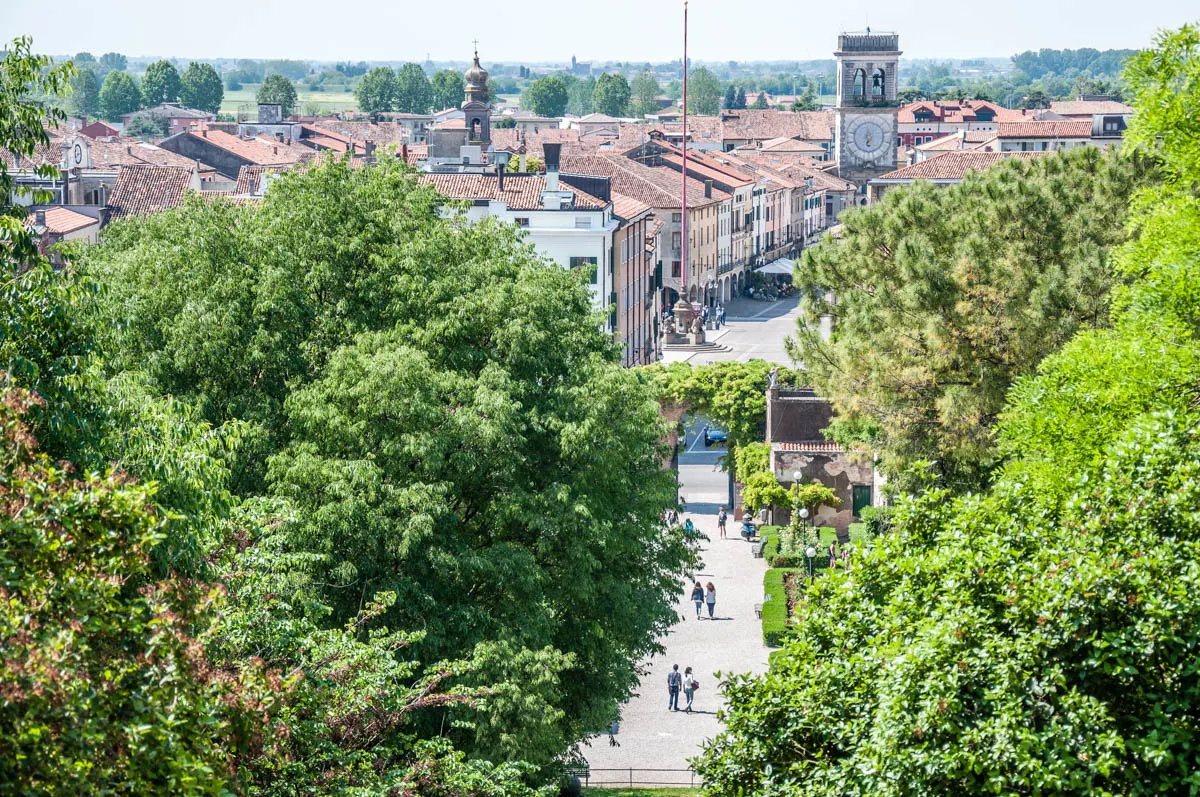
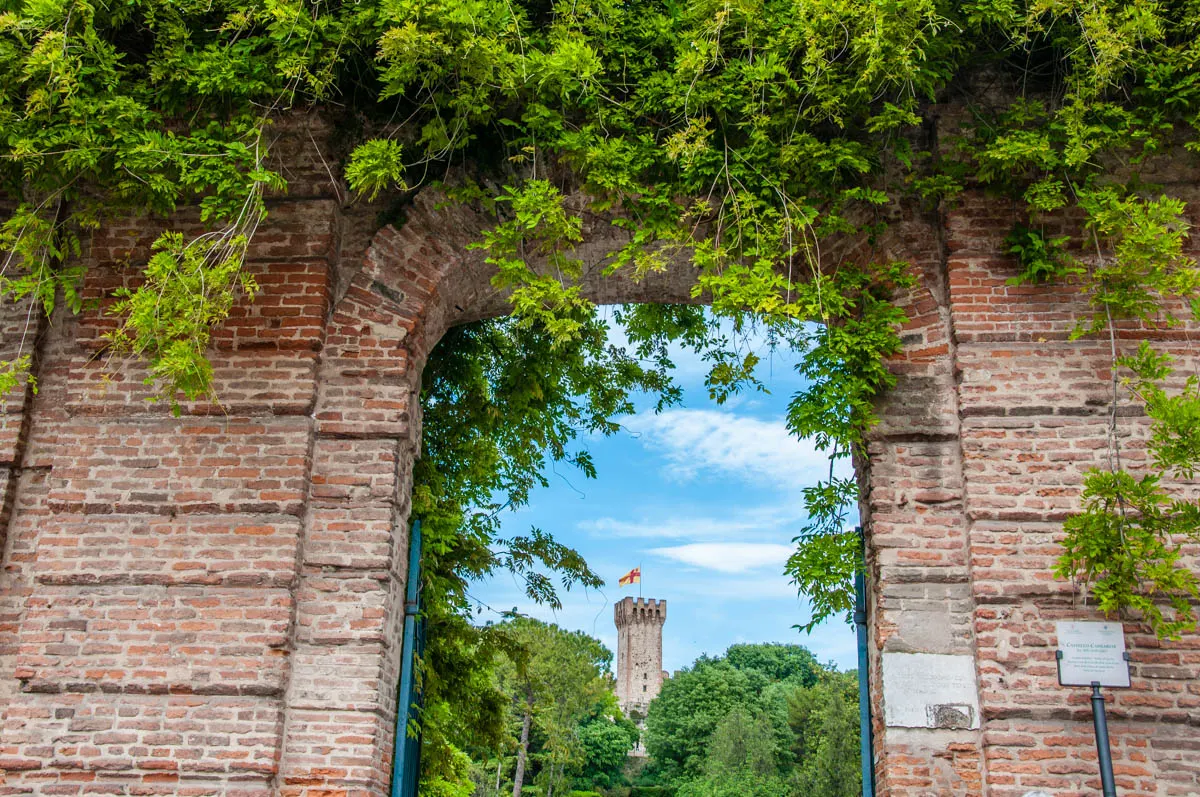
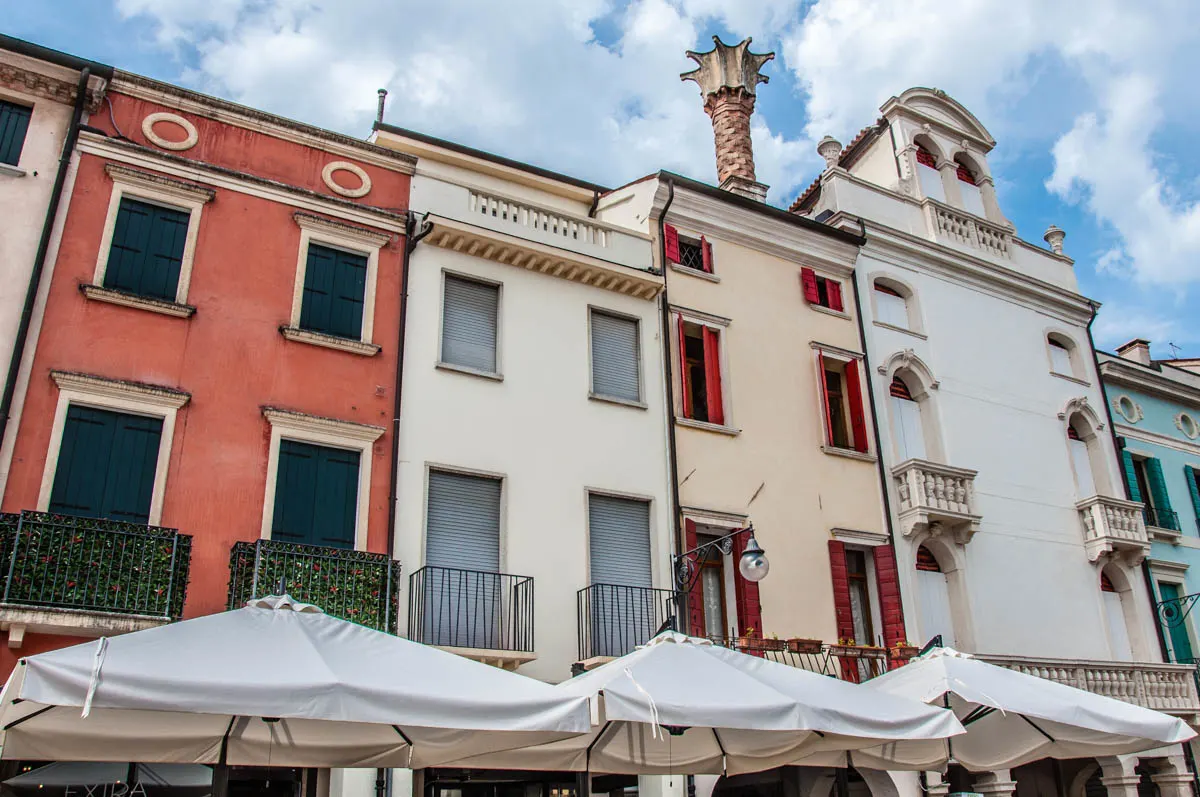
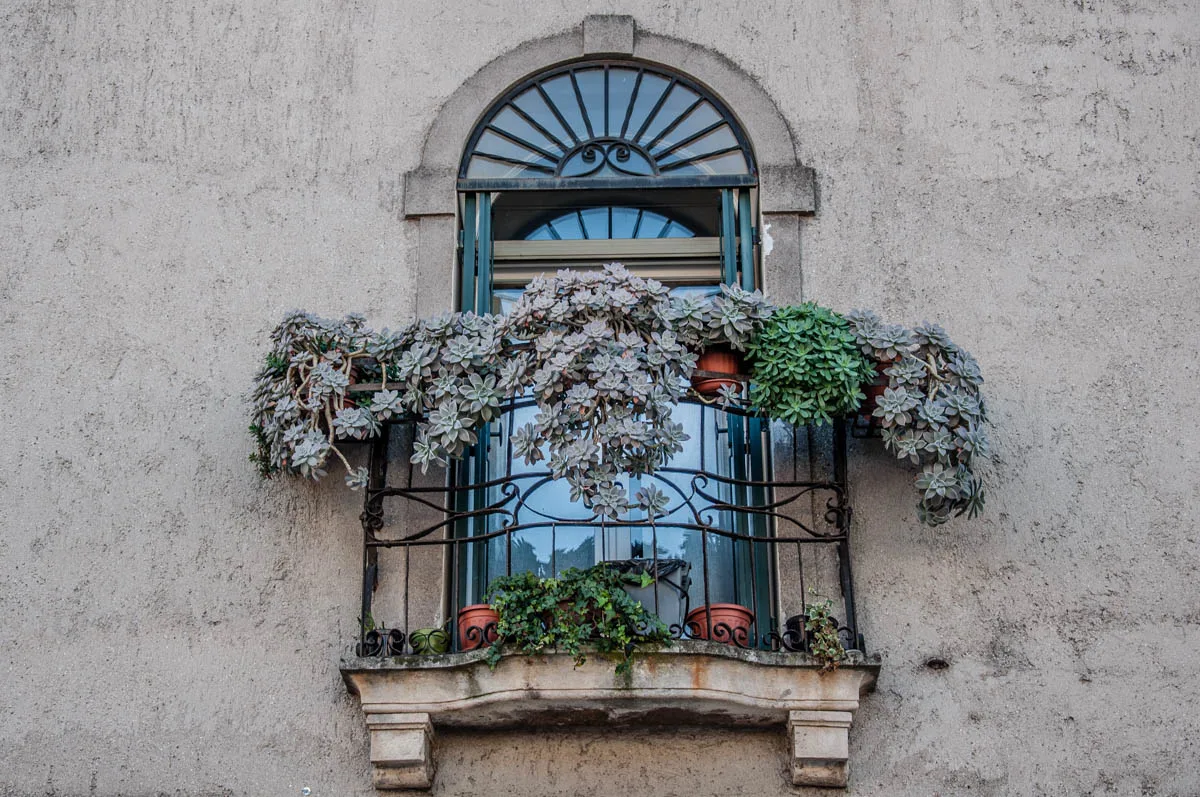
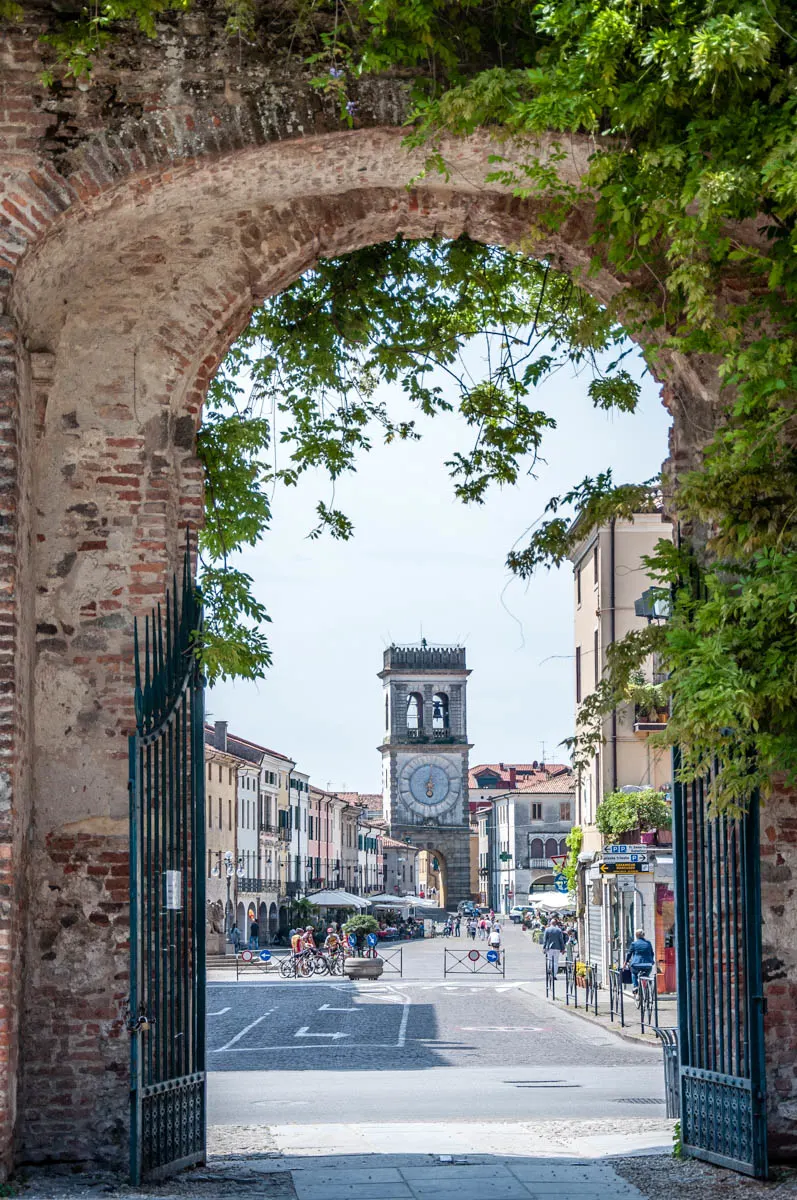
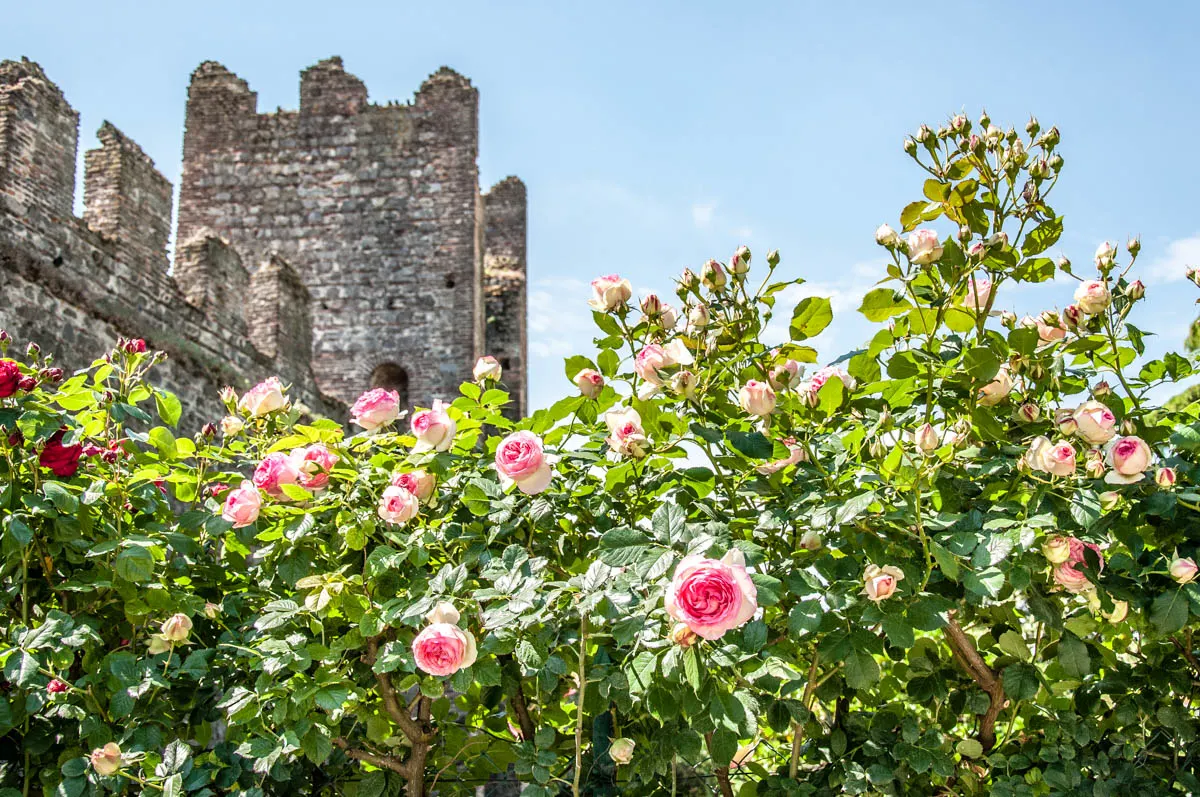
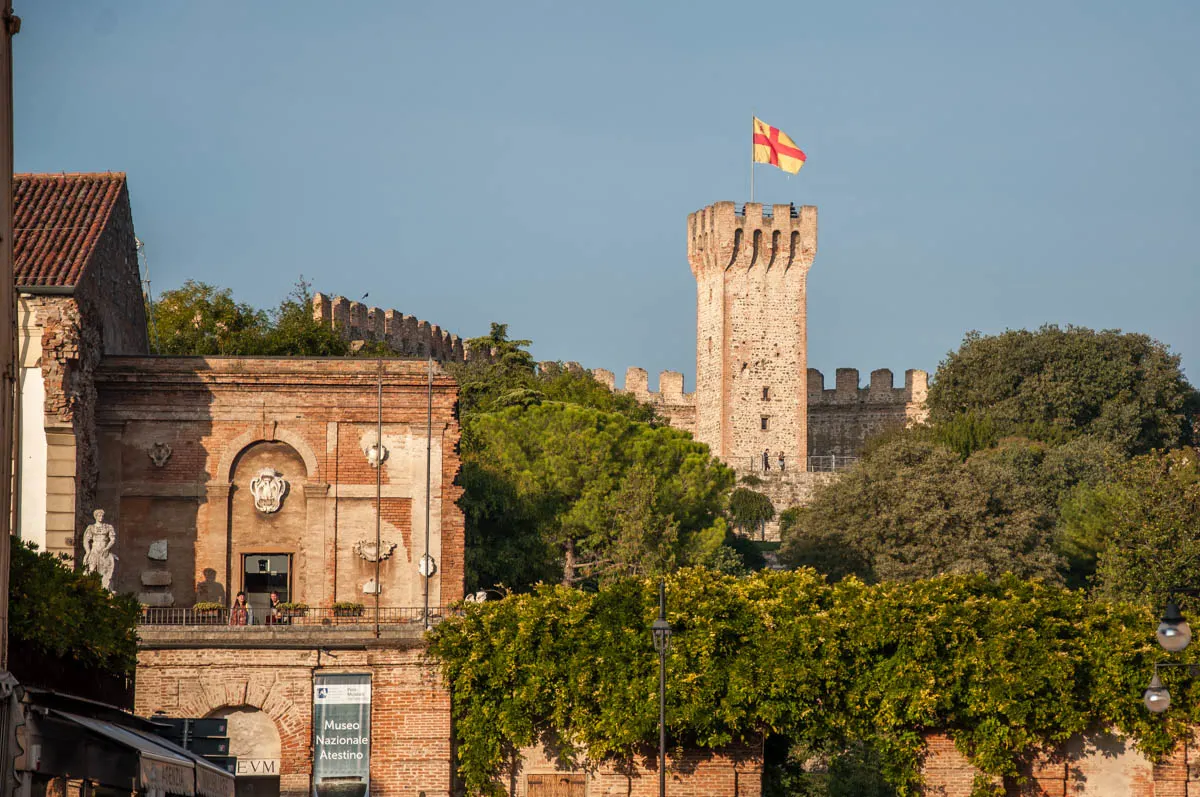
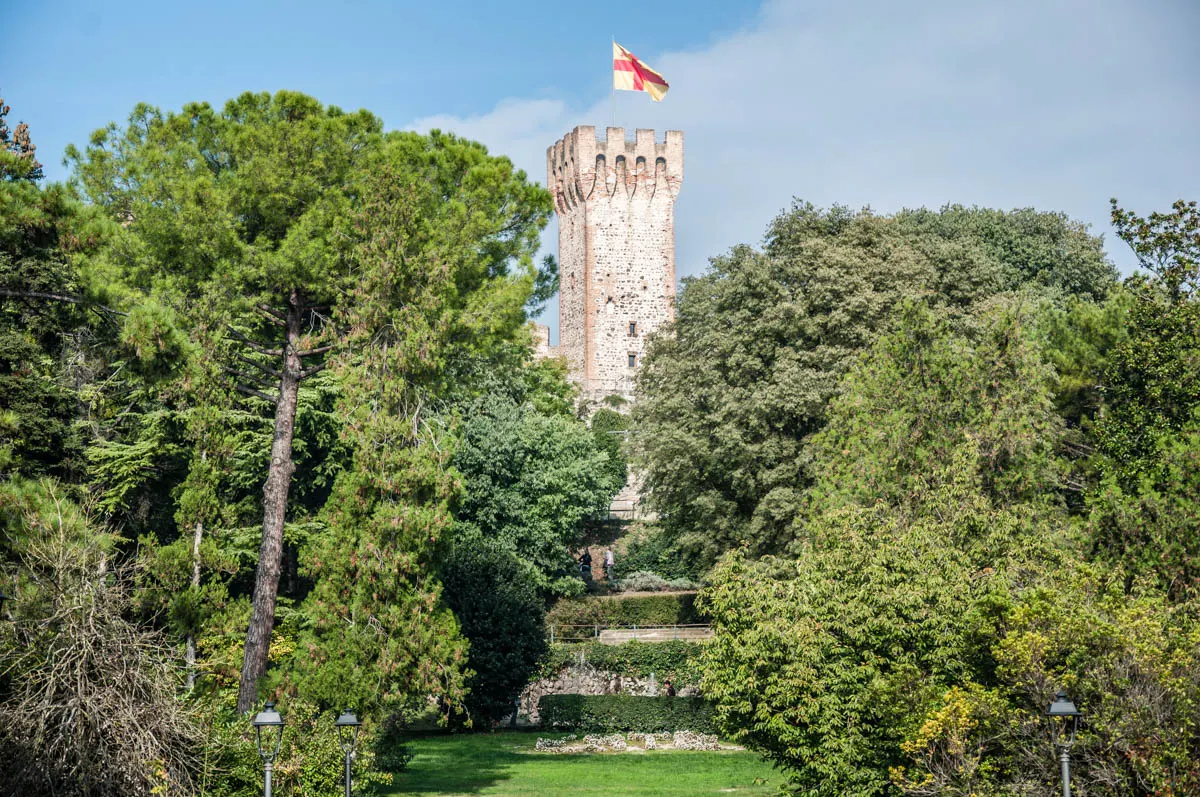
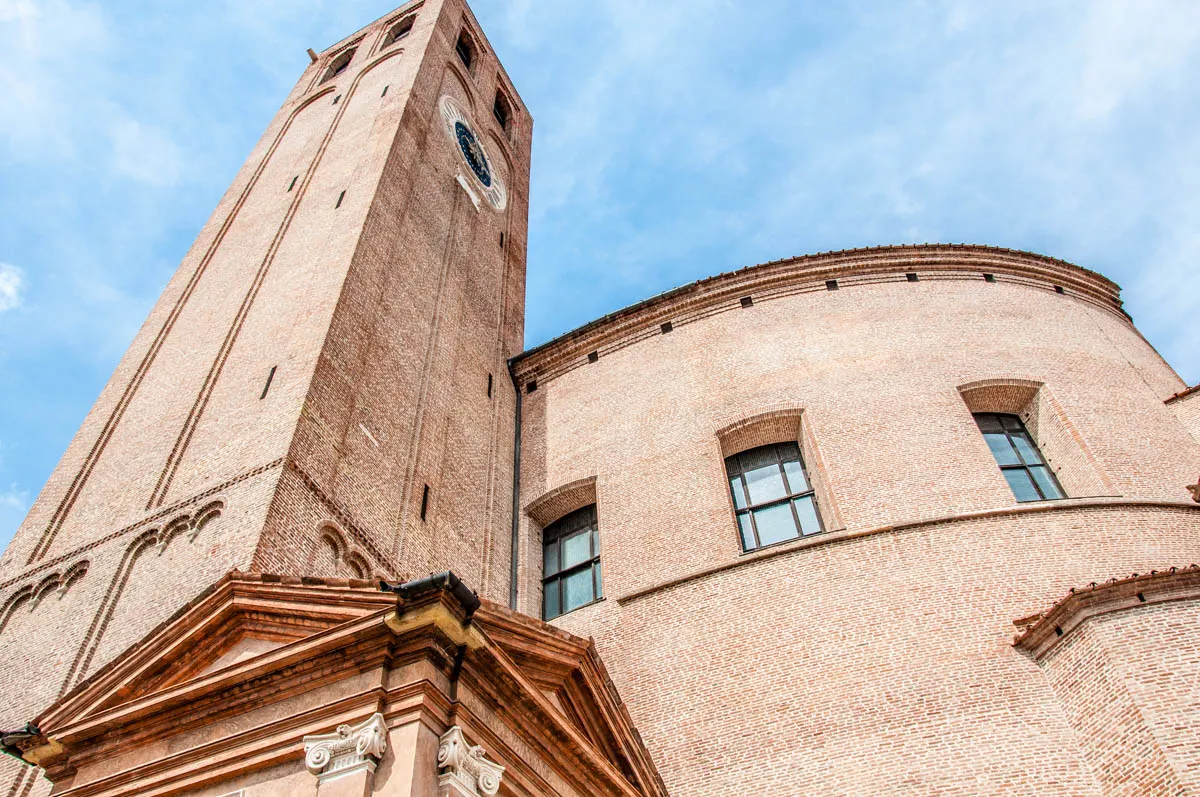
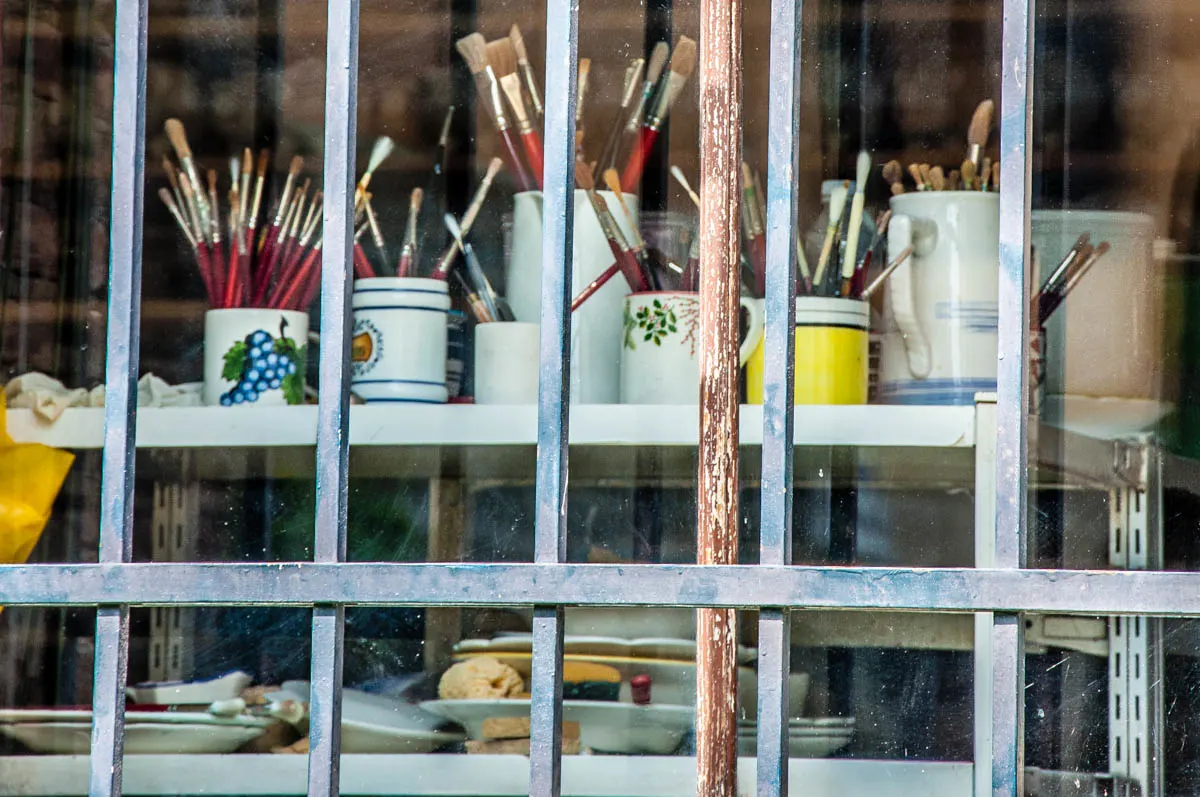
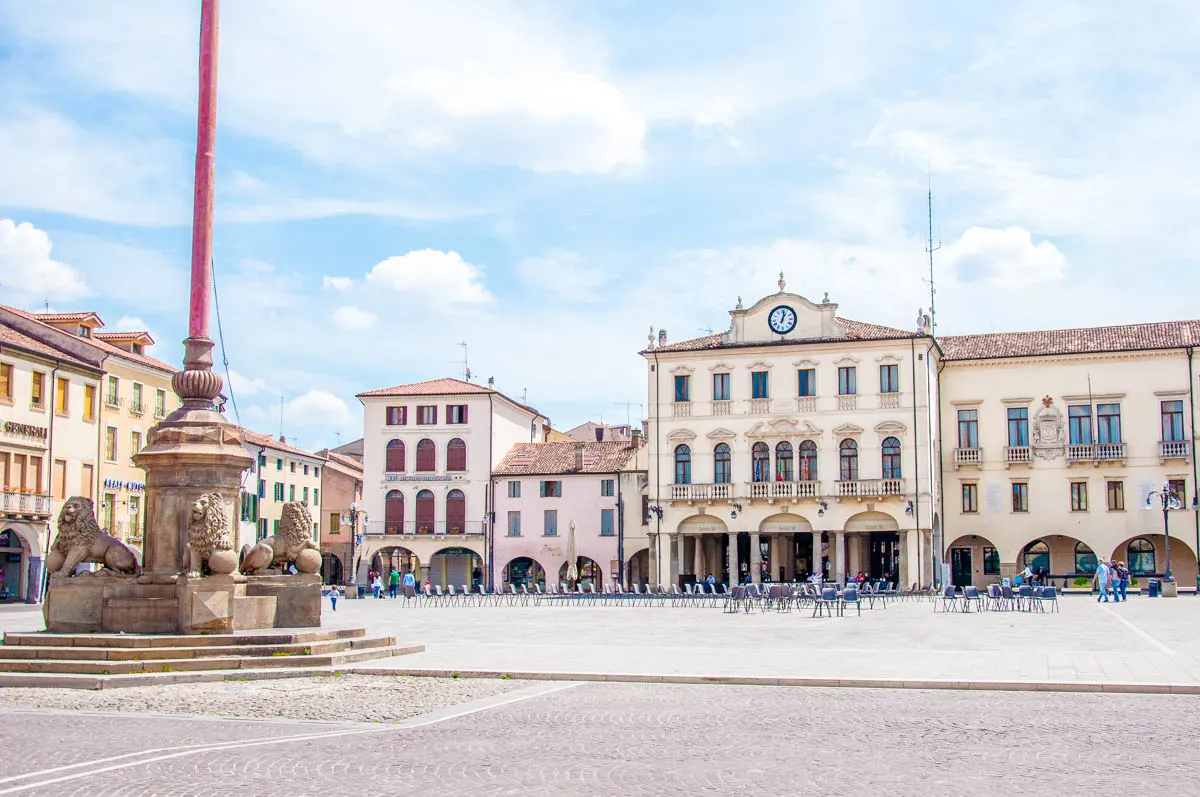
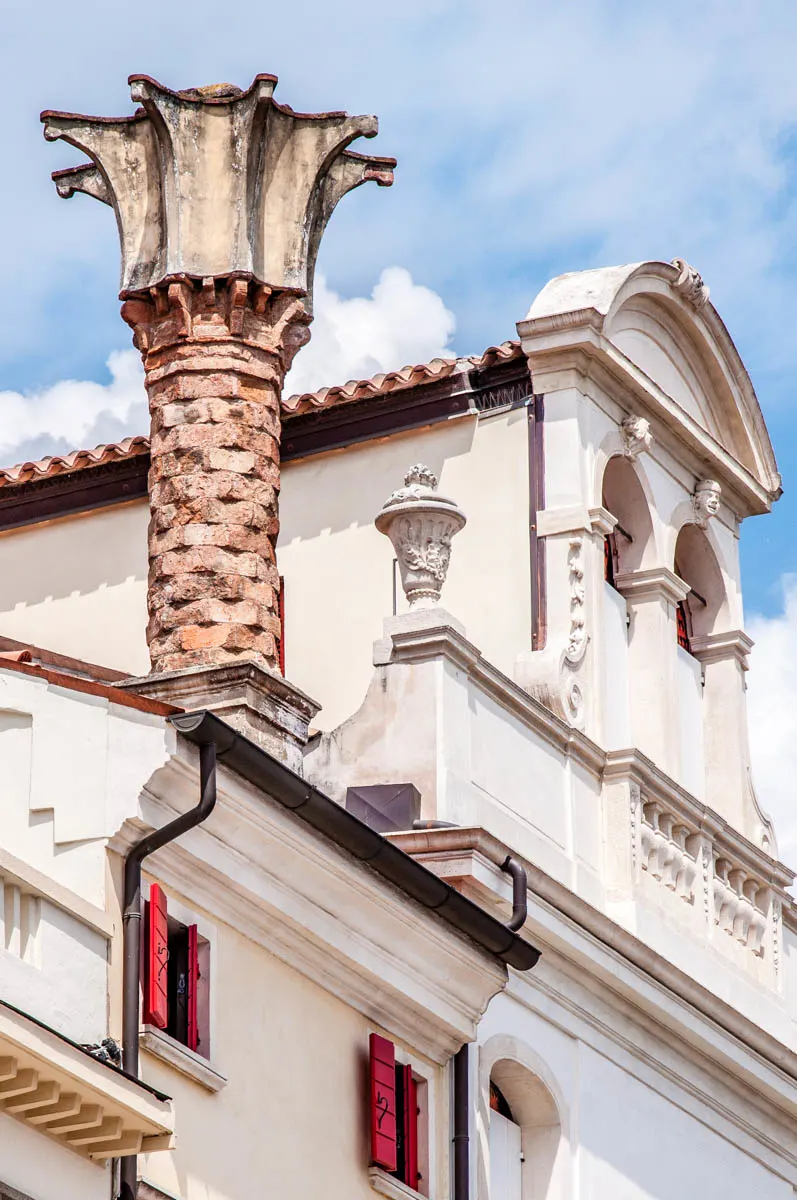
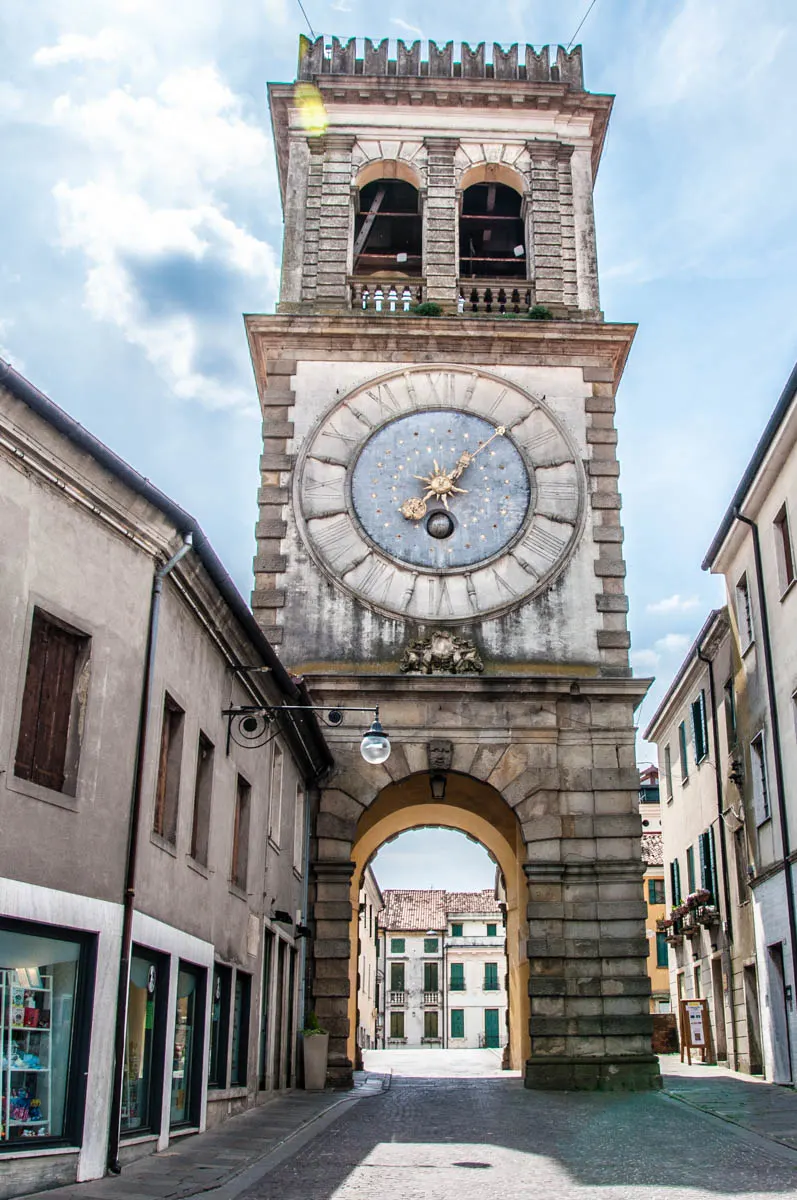
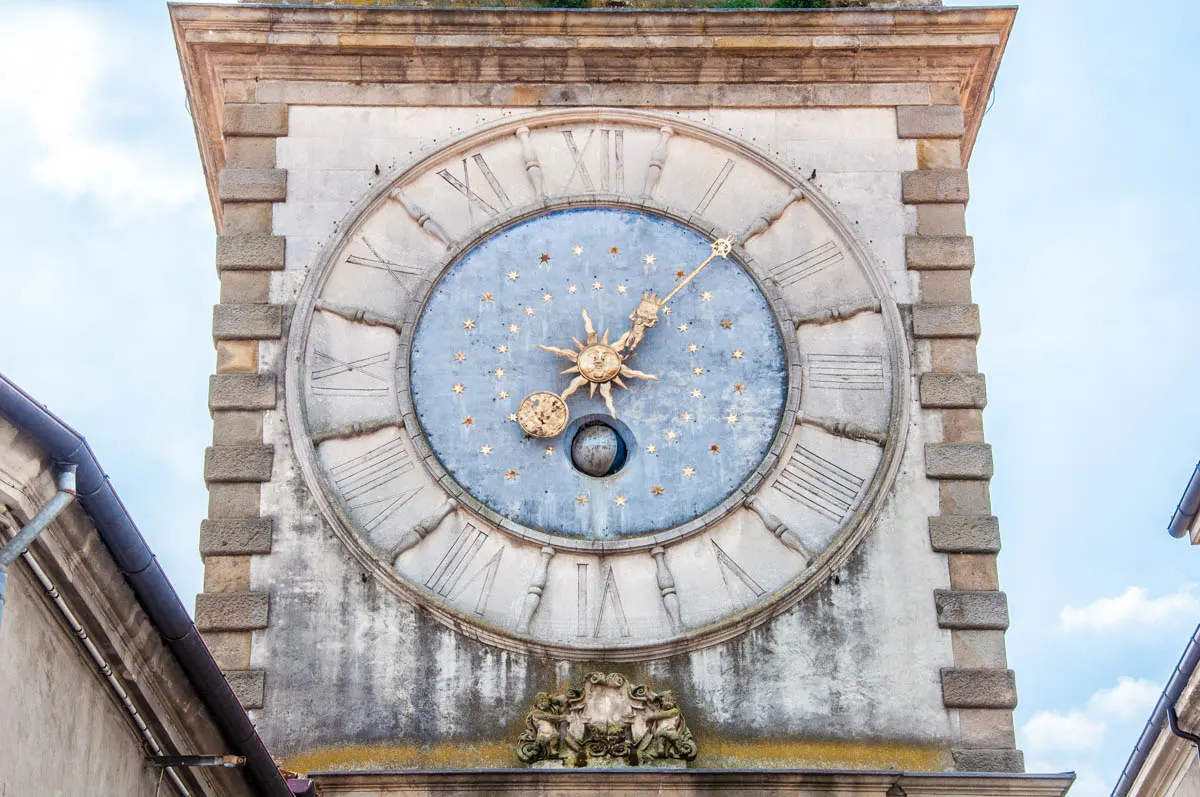
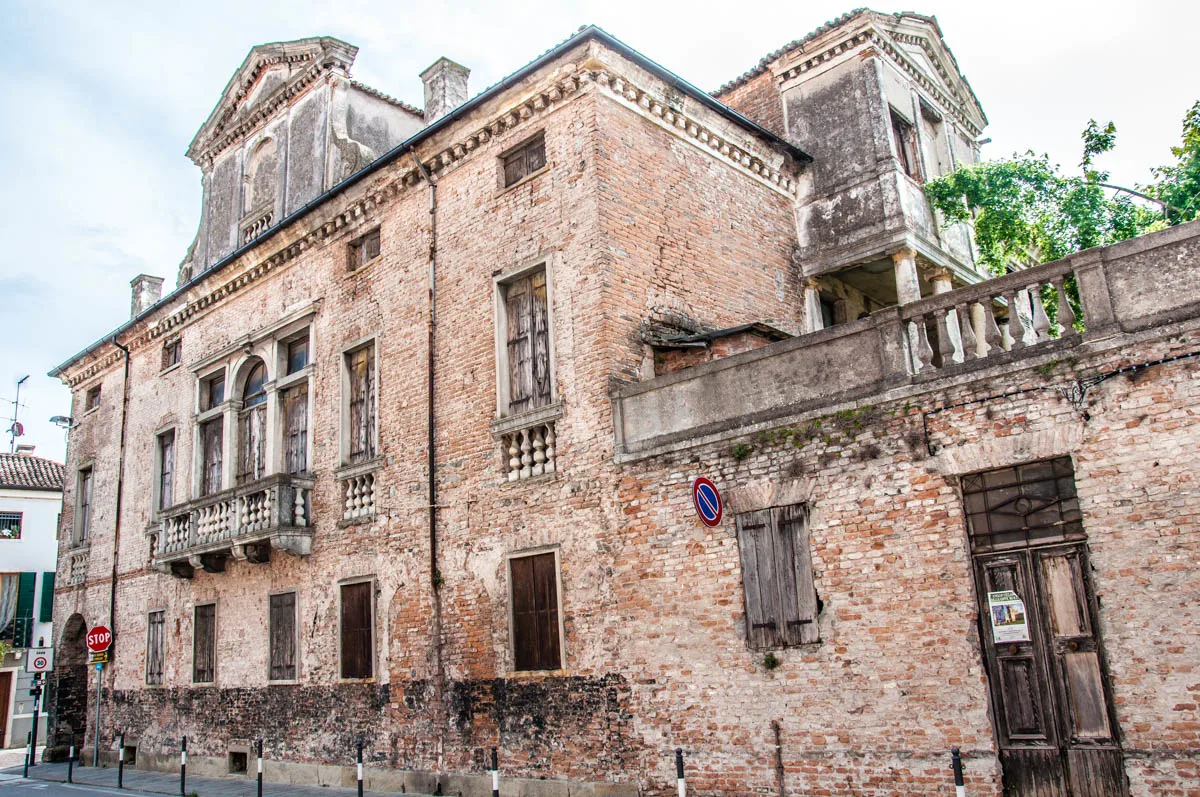
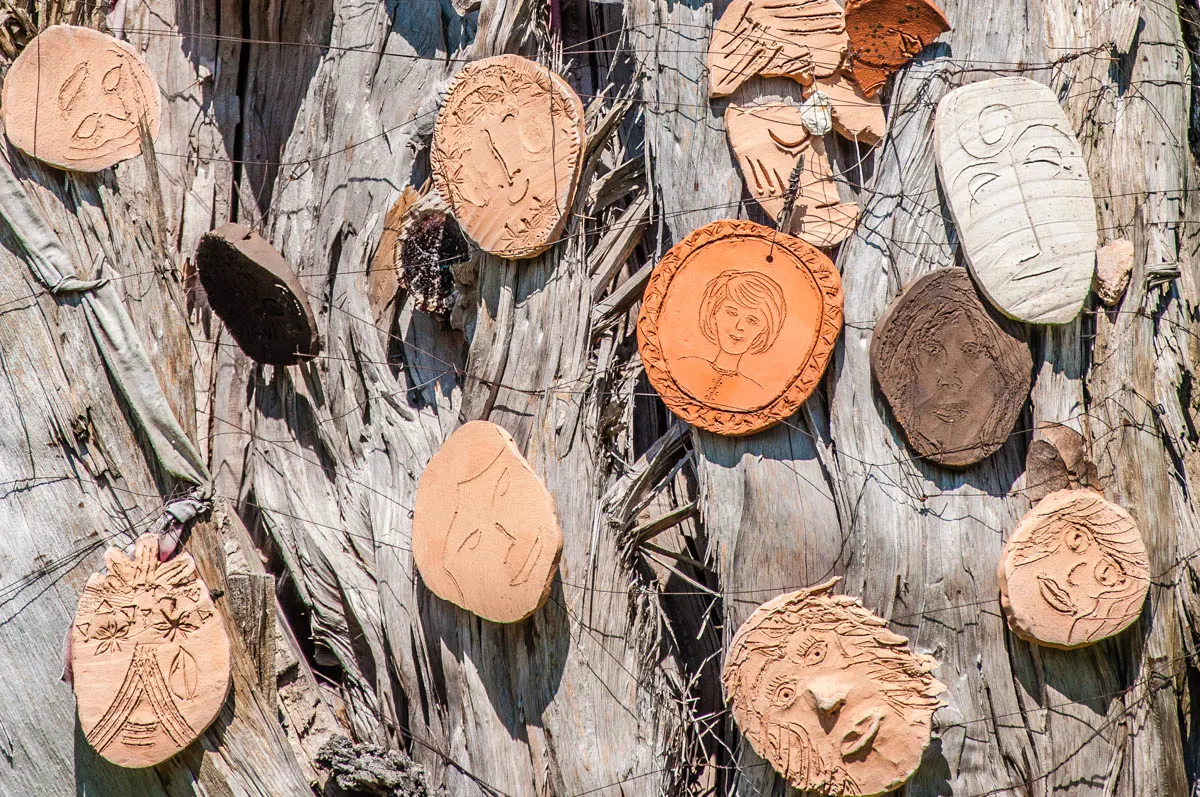
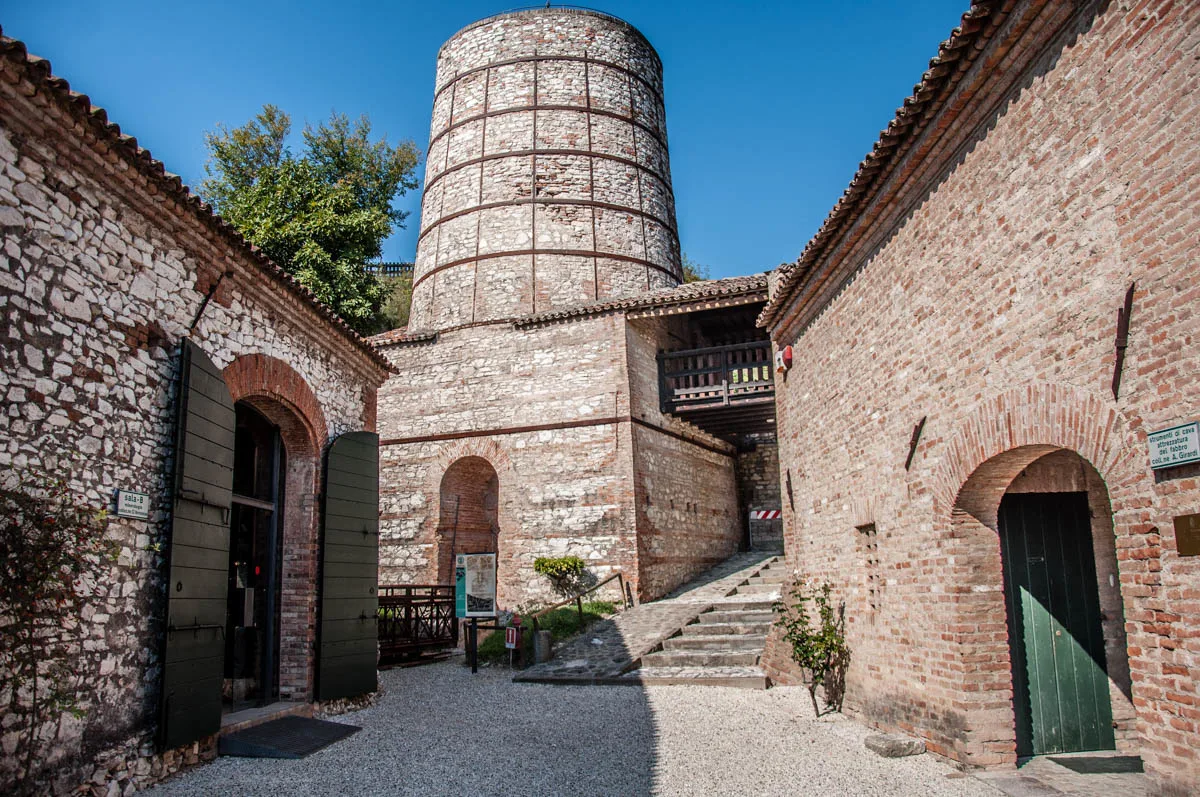
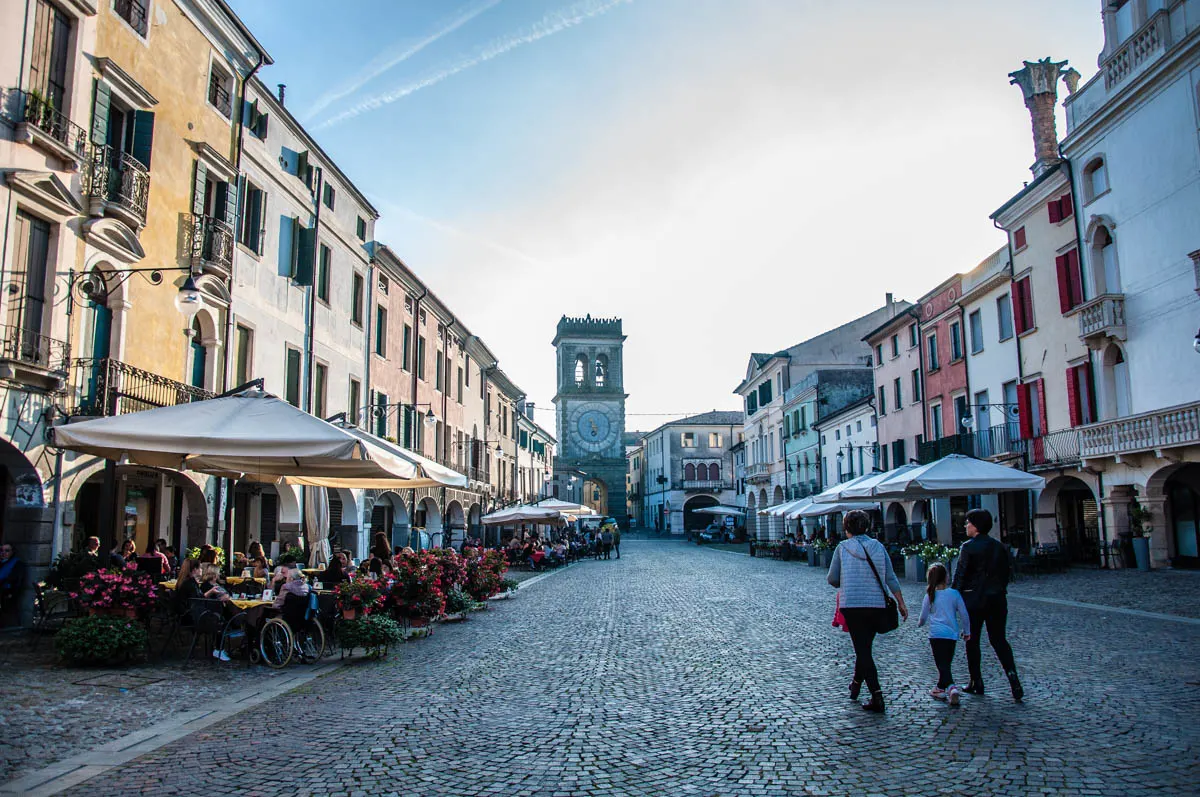
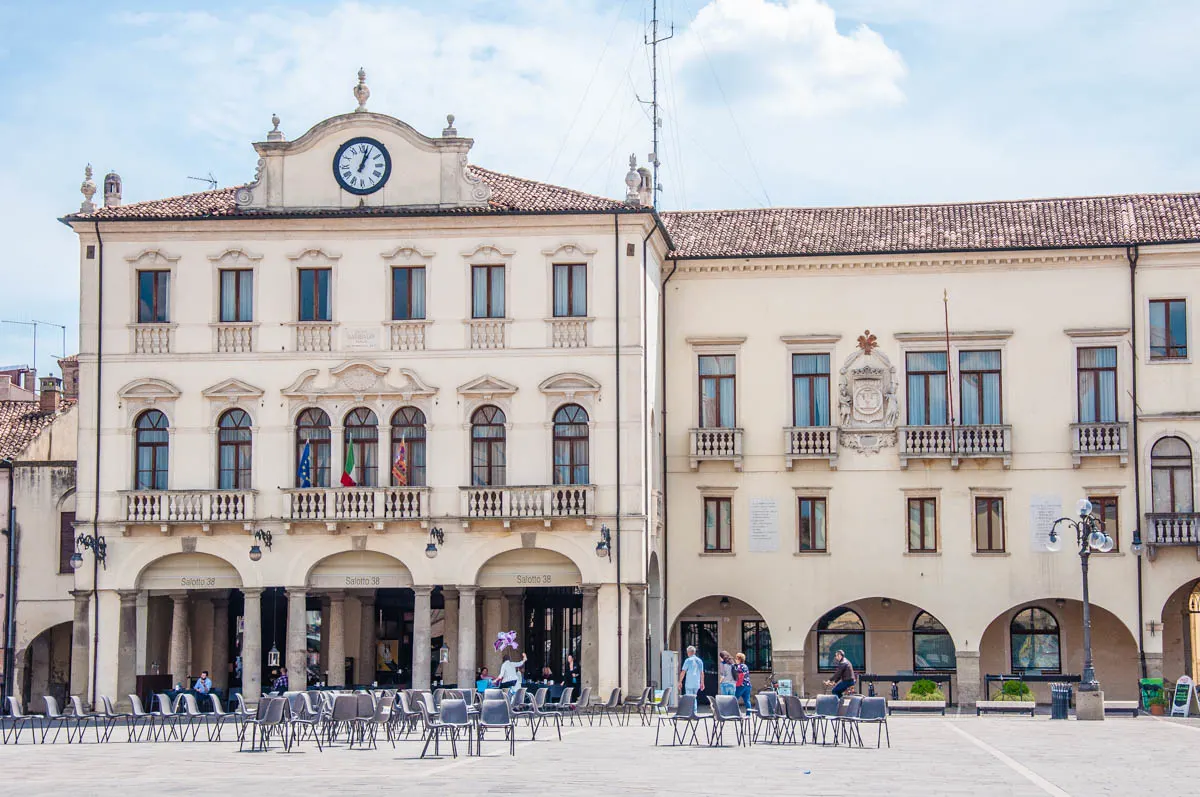
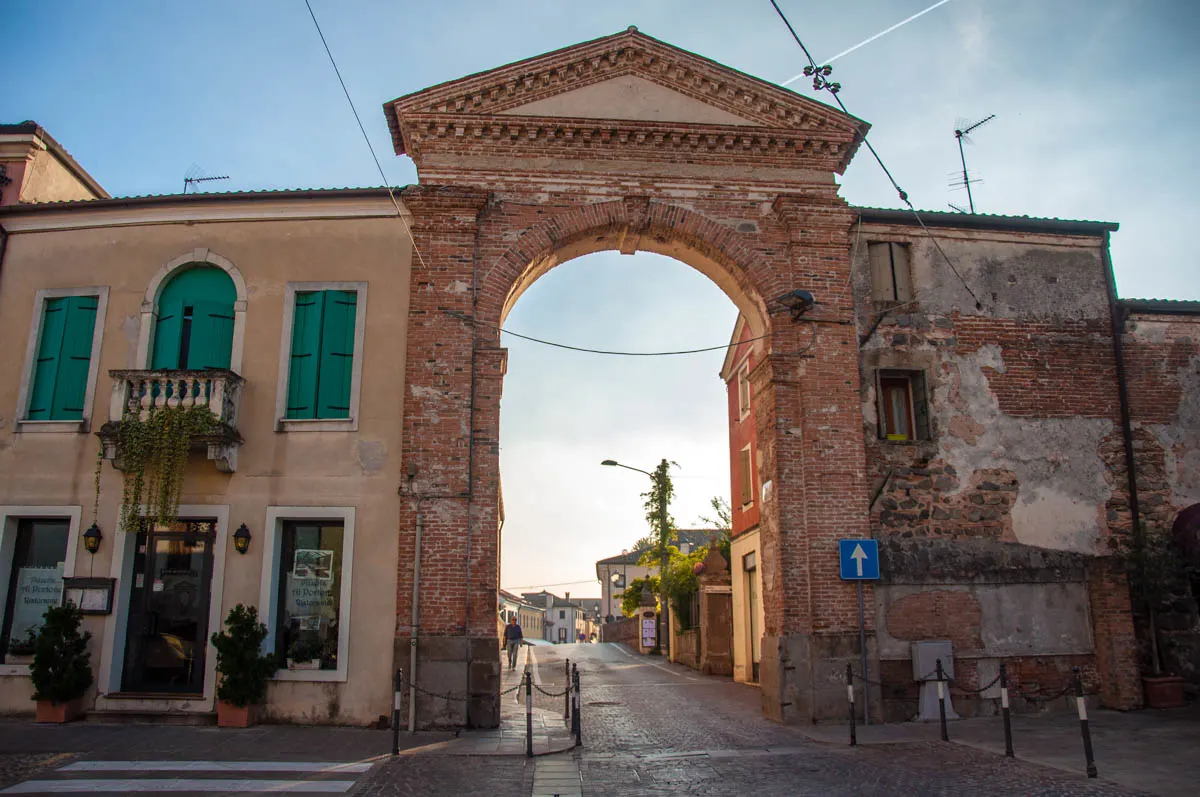
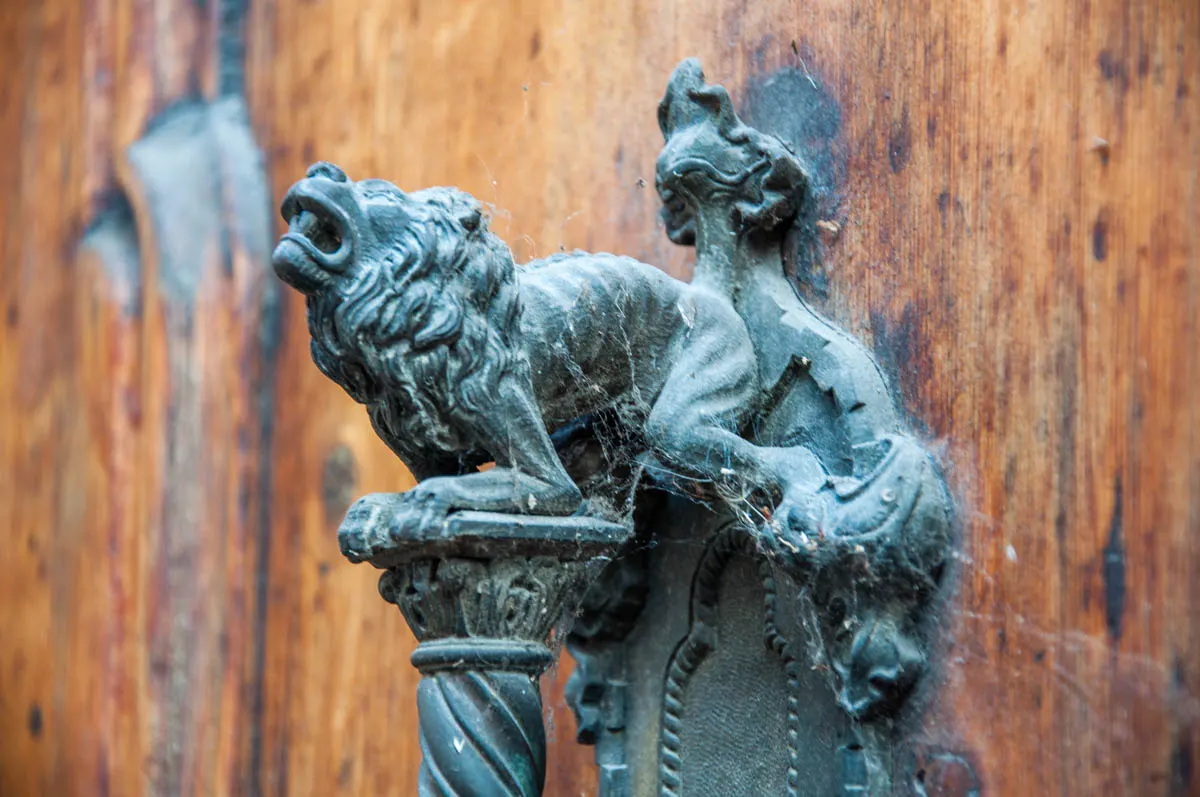
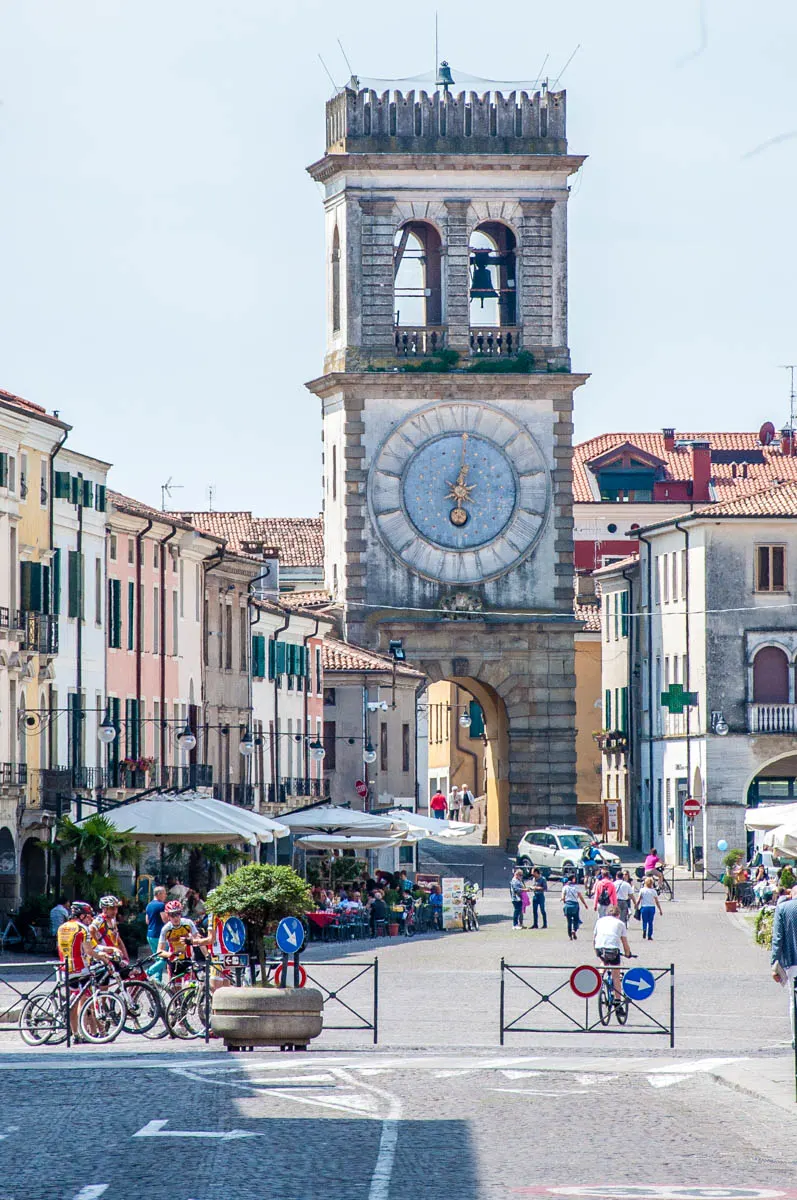
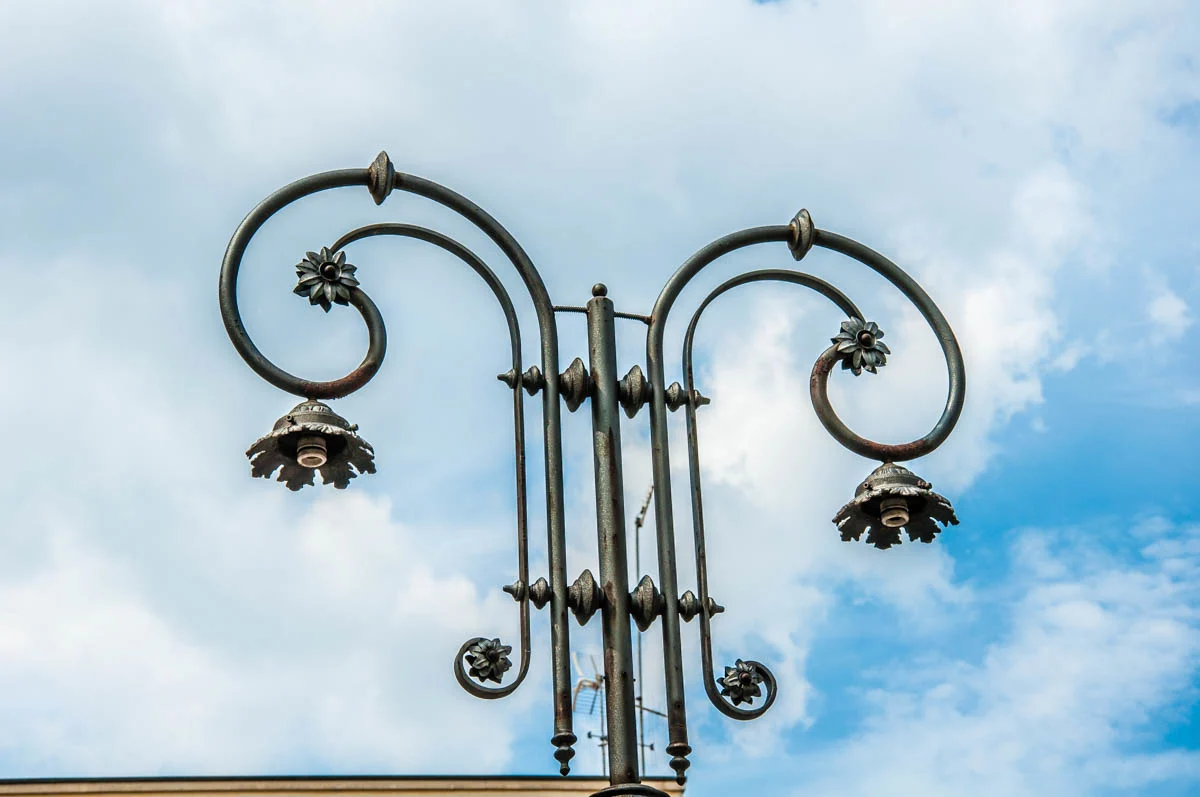
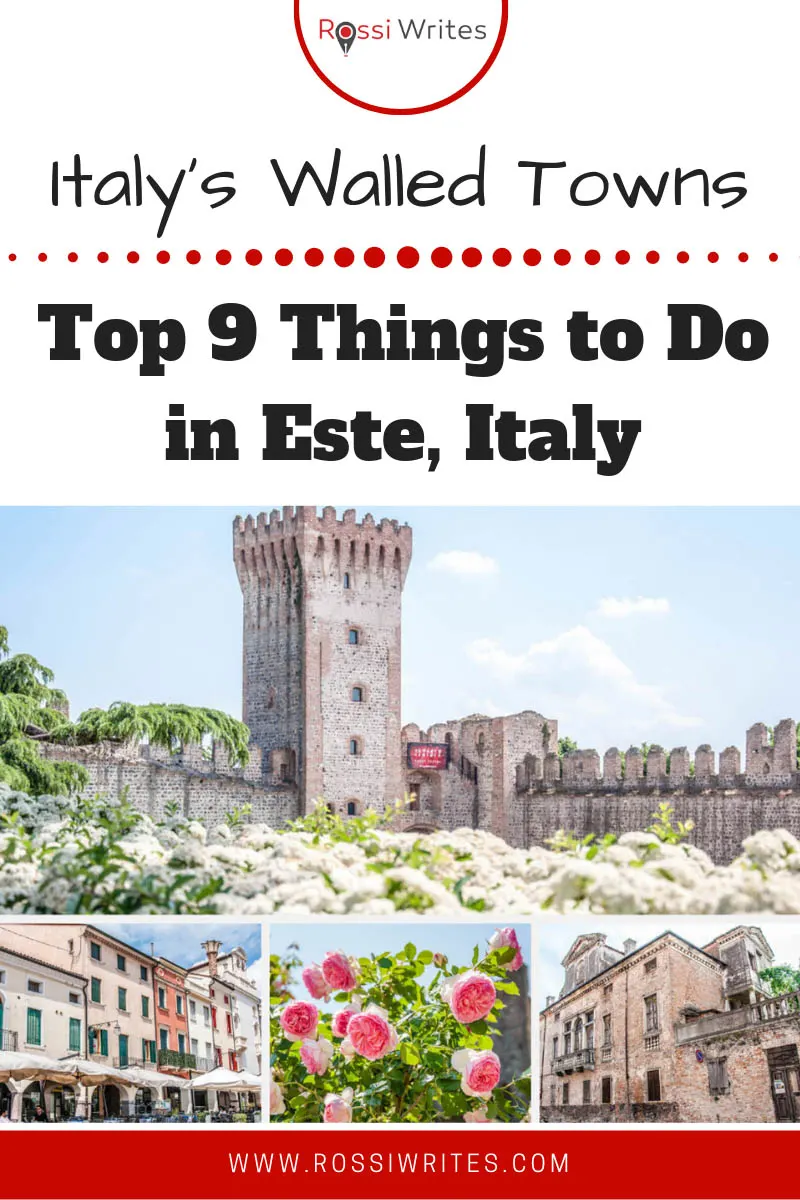
Melissa
Saturday 19th of September 2020
Hi, I love your posts about Italy as they have given me some excellent ideas on places to visit at the weekends. I love the sound of Este, it looks beautiful. Sadly I do not have a car so would need to use public transport. I live in Vicenza. Do you know if its possible to reach Este using public transport? Thank you for all your inspired ideas for day trips, they are a pleasure to read. Melissa
admin
Saturday 19th of September 2020
Thank you for your kind words, Melissa! I hope you are enjoying your life in Vicenza. You can get to Este from Vicenza either by train via Padua or by train to Padua and then bus to Este. If you look at this article: https://rossiwrites.com/italy/day-trips-italy/day-trips-from-padua-italy/ at the end of the page, there is detailed information on how to navigate Italy's train and bus systems for easy day trips. I hope this helps! Best wishes! :)
Rossi